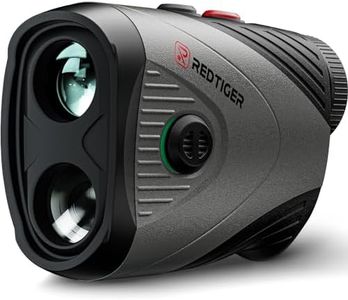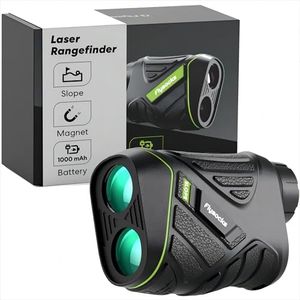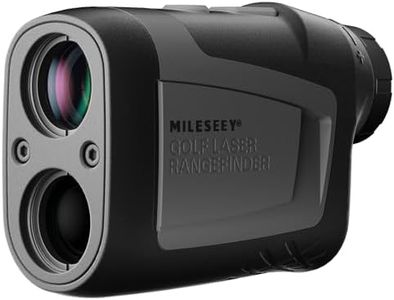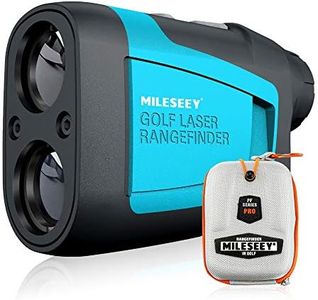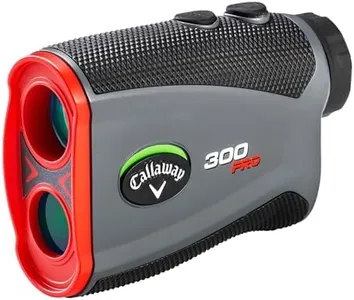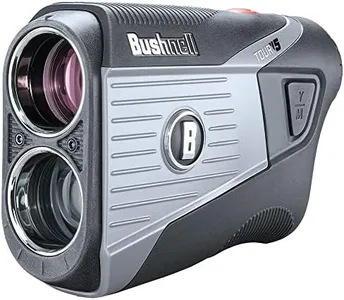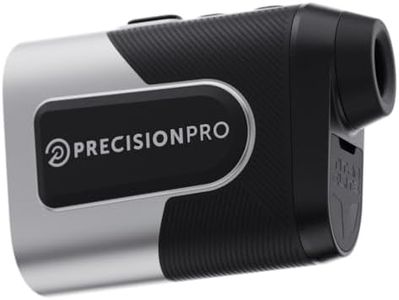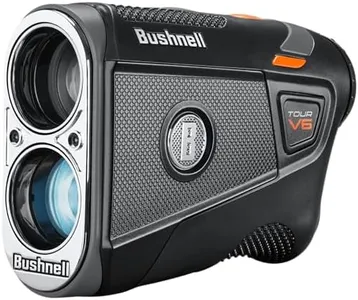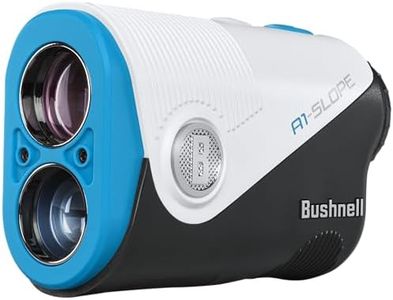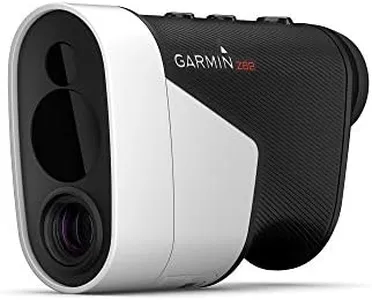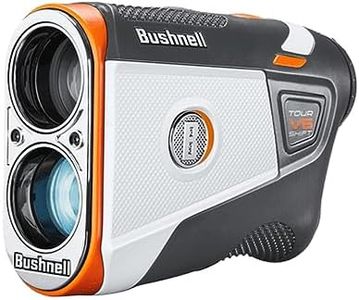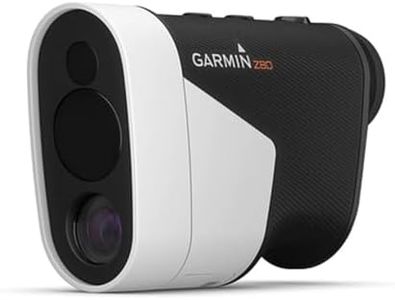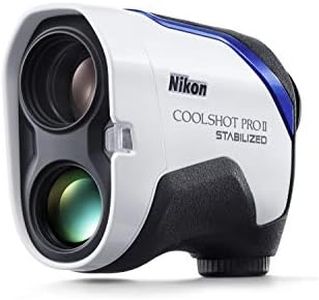We Use CookiesWe use cookies to enhance the security, performance,
functionality and for analytical and promotional activities. By continuing to browse this site you
are agreeing to our privacy policy
10 Best Golf Rangefinder
From leading brands and best sellers available on the web.By clicking on a link to a third party's website, log data is shared with that third party.
Buying Guide for the Best Golf Rangefinder
Choosing the right golf rangefinder can greatly improve your golf game by helping you accurately determine distances on the course. The right device should be simple to use, reliable, and appropriate for both your skill level and the type of courses you play on. By understanding the main features and specifications, you can select a model that matches your unique needs and ensures a better playing experience.RangeThe range specification tells you the maximum distance the rangefinder can measure, usually given in yards or meters. This is important because it determines how far ahead you can measure the distance to a target, such as the flagstick or hazards. Typical ranges vary from about 400 to 1,000 yards. For most amateur players, a range of 400-600 yards is plenty, as you'll rarely need to measure more than the farthest point on the hole. Professionals or those who play on very large or open courses might prefer a higher range. Think about the courses you play: if they are relatively short or heavily wooded, a super-long range may not be necessary.
AccuracyAccuracy tells you how close the rangefinder’s reading is to the actual distance, often expressed as +/- a certain number of yards or meters (for example, +/-1 yard). High accuracy is essential for precise shots, especially when you’re approaching the green. Models usually range from +/- 1 yard to +/- 5 yards. For most users, an accuracy of +/- 1 yard is ideal and delivers reliable results. If you're a casual player, a slightly higher margin of error may be acceptable, but if you’re serious about improving your score, look for tighter accuracy.
Slope MeasurementSlope measurement technology takes into account changes in elevation and adjusts the distance it shows to reflect uphill or downhill shots. This is useful for players who encounter hilly courses, as it helps you choose the right club for the adjusted distance. Some models offer an option to turn slope on or off, which is required for tournament play. If you often play on courses with lots of hills, slope measurement can be valuable. However, for flat courses or strict competition use, you may not need this feature.
MagnificationMagnification indicates how much closer the target will appear when looking through the rangefinder, commonly ranging from 5x to 7x. Higher magnification makes it easier to see your target clearly, especially from a distance, but it can also make the rangefinder a bit shakier if you have unsteady hands. If you want a clearer view of small targets or flags that are far away, go for higher magnification. If ease of use is more important than seeing things very close-up, a lower magnification may suffice.
Display TypeGolf rangefinders have either optical (through-the-lens) or digital displays, which can sometimes include extra info like battery life or shot angle. Optical displays generally provide a clearer, more natural view, while digital displays can offer more data at a glance. Consider what type of information you like to see and how easy you want the screen to be to read in bright sunlight. If simplicity matters most, opt for a basic optical display; if you like more data, consider one with added display features.
Size and WeightThe size and weight affect how easily you can carry and use the rangefinder during your round. Lighter and smaller models are easier to slip into a pocket or bag, while larger ones may offer better grip or stability but could be more cumbersome. If you walk the course and want something unobtrusive, look for compact, lightweight options. If you prefer something more substantial to hold steady, a heavier model could suit you better.
Ease of UseEase of use includes factors like button placement, focusing speed, and how intuitive it is to operate the device. Some rangefinders require two hands and several steps to use, while others offer one-button operation or quick focusing mechanisms. Think about how quickly you like to play and how simple you'd like the process to be—frequent golfers may benefit from a model that offers faster and more straightforward use.
Battery LifeBattery life tells you how long the device can be used before needing replacement batteries or a recharge. Longer battery life is better for those who play frequently or tend to forget to recharge devices. Most rangefinders use common batteries that last several rounds, but some have rechargeable options. If you don’t play often, battery life may not matter as much. If you play longer rounds regularly, opt for a model with a reputation for lasting power.
